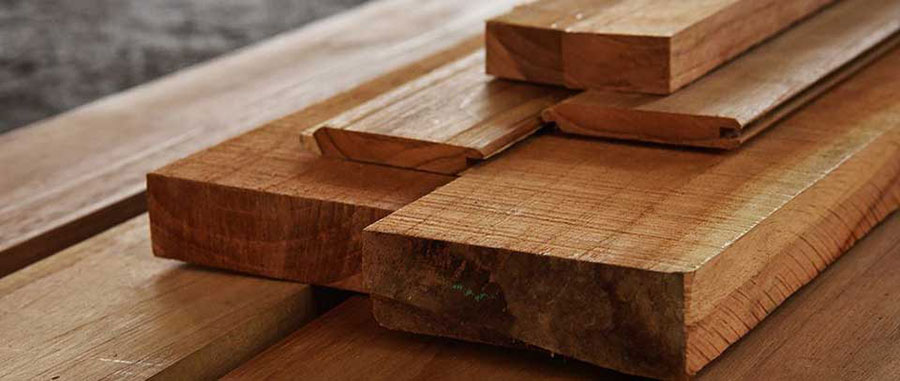Hardwood Lumber: A Buyer's Guide for the DIYer
Published: July 18, 2023

Hardwood lumber plays a vital role in do-it-yourself (DIY) projects, offering beauty, durability, and versatility. Whether you're building furniture, crafting decorative items, or undertaking woodworking projects, understanding hardwood lumber is essential. This buyer's guide aims to equip DIYers with the knowledge and insights needed to make informed decisions when purchasing hardwood lumber.
I. Understanding Hardwood Lumber
Hardwood is derived from deciduous trees and possesses unique characteristics that set it apart from softwood. Exploring different hardwood species, understanding grain patterns, colors, textures, moisture content, and grading systems will help you assess the quality and suitability of the lumber for your projects.
II. Sourcing Hardwood Lumber
Finding a reliable supplier is crucial when purchasing hardwood lumber. Local suppliers, specialty stores, and online resources and marketplaces offer a range of options. Consider factors like supplier reputation, availability of specific species and sizes, sustainable sourcing practices, and competitive pricing to make an informed choice.
Shop Dimensional Hardwood Lumber
III. Selecting the Right Hardwood Lumber
To ensure success in your projects, it's important to select the appropriate hardwood lumber. This involves determining your project requirements, calculating the quantity and sizes needed, evaluating lumber quality through visual inspection and moisture content testing, and aligning wood characteristics with your desired aesthetics.
IV. Essential Tools for Working with Hardwood Lumber
Equipping yourself with the right tools is essential for working with hardwood lumber. Hand tools, power tools, and safety equipment are essential components of your woodworking arsenal, allowing you to mill, dimension, and shape the wood with precision.
V. Working with Hardwood Lumber
Preparing the wood for use involves milling, dimensioning, and removing defects and imperfections. Understanding common joinery methods, such as dovetails, mortise and tenon, and box joints, will enable you to create strong and visually appealing connections. Additionally, mastering finishing techniques will help you enhance the wood's natural beauty and protect it for years to come.
VI. Troubleshooting Common Issues
Warping, cupping, bowing, and moisture-related problems can occur when working with hardwood lumber. Learning how to identify and address these issues will enable you to salvage your projects and maintain their quality over time. Tools like planers and jointers can help alleviate these issues when buying rough lumber, but if you don't have these tools you can always buy S4S lumber that has already been milled on all 4 sides.
With this guide in hand, you're now equipped with the knowledge to confidently navigate the world of hardwood lumber as a DIYer. By understanding the characteristics of hardwood, sourcing it from reliable suppliers, selecting the right lumber for your projects, acquiring the necessary tools, and honing your woodworking skills, you'll be well on your way to creating beautiful and enduring pieces that showcase your craftsmanship. Embrace the joy of working with hardwood lumber and unleash your creativity in the world of DIY woodworking. Best wishes for your successful woodworking endeavors!
Build your new Custom and get a Free Instant Quote Today
Our state of the art designers allow you to design and build completely customized to fit your exact needs.
Questions or concerns contact us here or via 412.641.0177 .
Build an Instant QuoteNeed Help?
Contact Us @ 412.641.0177
Recently Published
Interior Cabinet Door Styles That Elevate Your Kitchen Or Bathroom
Published: November 12, 2025
Why Mortise
Published: October 23, 2025
From Shaker To Raised Panel: Cabinet Door Styles That Transform Your Home
Published: October 08, 2025
How To Match Door
Published: September 30, 2025
Choosing The Right Exterior Shutters: Louvered, Board
Published: September 25, 2025
The Warmth Of Wood: Barn Doors Tailored To Your Home
Published: September 09, 2025
Classic Style, Modern Strength: Custom Wooden French Doors
Published: September 03, 2025
Built By Hand, Designed To Last: Custom Wood Louvered Doors
Published: July 07, 2025
Flat Panel Shutters For Colonial, Craftsman, And Farmhouse Styles
Published: May 28, 2025
Bring Old-World Charm Home With Custom Wooden Louvered Shutters
Published: May 04, 2025

